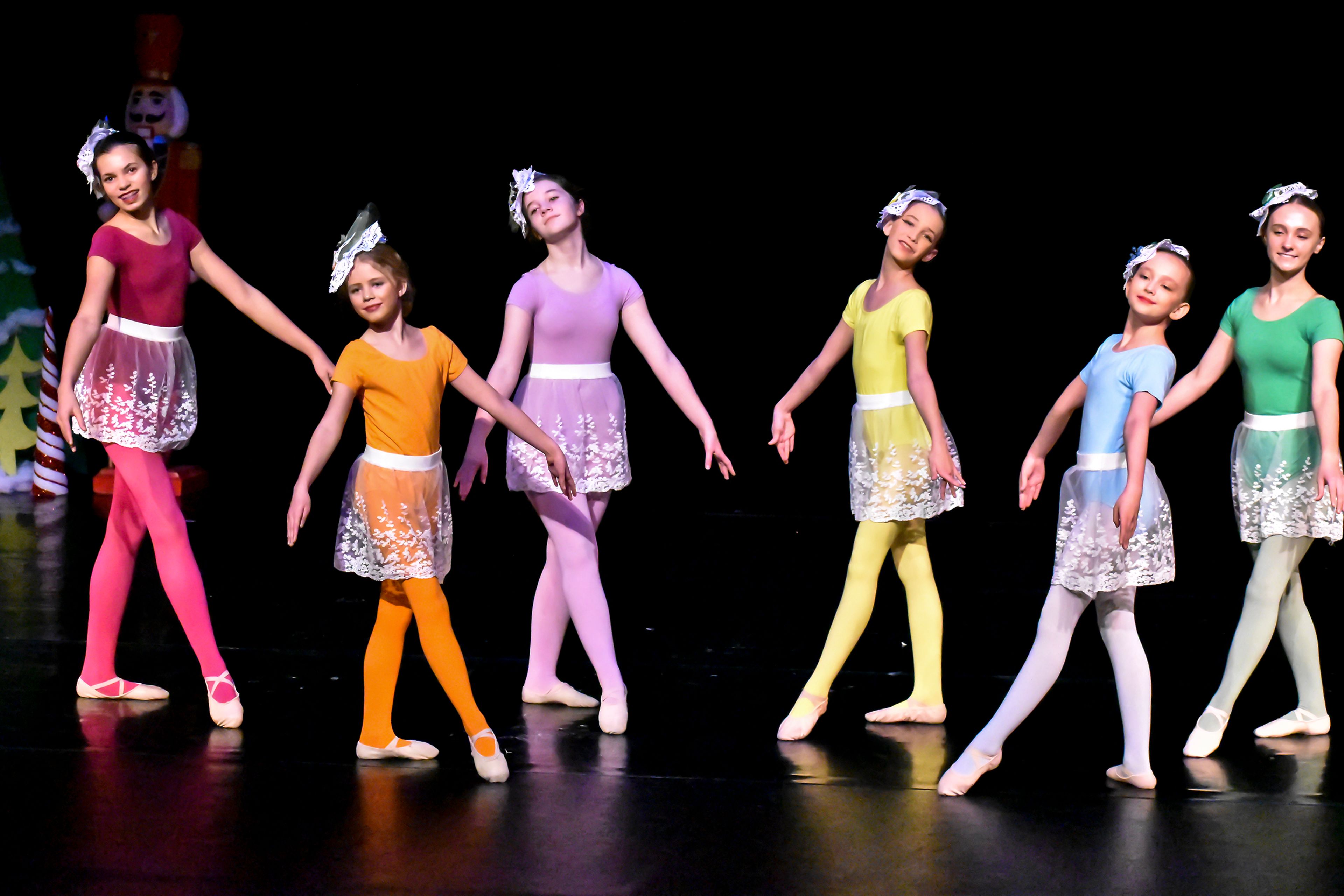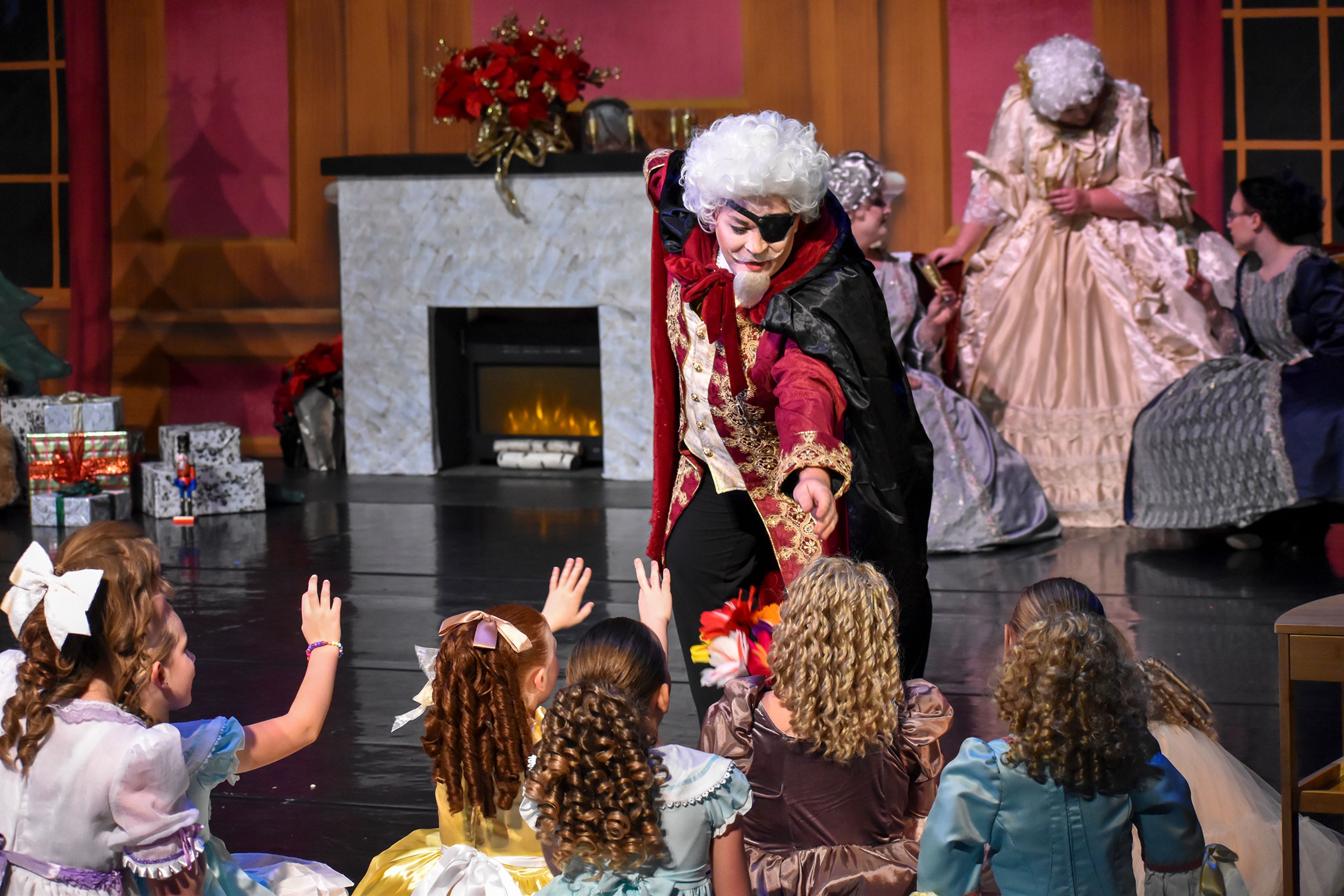Moving together
Moscow Movement Arts Center brings community members together for annual ‘Nutcracker’ performance
Three years ago, Rachel Dodson’s dream of breaking through the stereotype of ballet as an elite art form and staging an inclusive community performance of “The Nutcracker” came to fruition.
Gordon Mellot, now assistant director for the annual production, joined that first year and experienced firsthand the spirit of togetherness Moscow Movement Arts Center brought to the production, when someone took issue with him — Mellot is a drag artist — being involved.
“I have never seen a group of people I just met support me wholeheartedly,” he said. “It was the moment I knew that the company has nothing but the best interest of its dancers at heart.”
This season’s production of the classic ballet opens Friday, again performed by a diverse group of community members through Moscow Movement Arts, which offers dance and performance education to people of all ages and abilities.
This year’s “Nutcracker” includes three dancers in the role of Clara Stahlbaum, the young woman who receives the nutcracker of the ballet’s title for Christmas, and a twist that keeps her character at the fore as the story unfolds.
Dodson, artistic director, and Mellot, who also plays Drosselmeyer and Mother Ginger, visited with Inland 360 via email about the show.
360: What was the inspiration for an all-ages production performed by community members?
Rachel Dodson: Historically, it is no secret that ballet is not known for its inclusivity, and the call for change is long overdue. Driven by our commitment to inclusion and the belief that representation matters in all aspects of what we do, I wanted to hold a space that welcomed everyone without discrimination.
I think it is important to take every opportunity possible to welcome artists of today and tomorrow to the dance floor for self-expression. It is through this practice I hope to impact the change I know many dance educators, myself included, wish to witness, which is that outdated perceptions about who can be seen, represented and celebrated onstage have nothing to do with the dance experience itself.
“The Nutcracker” felt like an excellent community tradition to begin the practice of holding this welcoming space because of its magical nature. After all, we’re never too old to take part in a bit of magic.
360: Was there comfort (or distraction or difficulty) in coming together in community for this show at a time when our country and communities are particularly divided?
RD: Oh, I think this is a really important question during a very important time. Initially, I have to say that there was no discomfort in kicking things off: “The Nutcracker” experience was an immediate hit with performers, families and audience members, and that enthusiasm carries throughout the entire year.
By the time auditions take place in August, the anticipation and excitement is at an ultimate high, and I think this year it offered an alternative focal point as individual objectives came together to accomplish a larger objective.
Also, I think dance, movement expression, art overall, can be a space to channel, communicate and understand feelings otherwise left unprocessed, unsettled, unacknowledged. I think this is where, in our role as art educators, facilitators and instigators, we have the opportunity to foster an experience for participants that is one of embracing our own humanness alongside that of others. Because on a base level, when you take other means of communication such as words away, what are we left with to express ourselves but our bodies?
It is within this self-observation of the learning and performance process, combined with the vulnerability of a body-based practice, where I observe participants come together and shed otherwise pervasive social barriers and learn from and alongside others who are very different from one another in many aspects.
Gordon Mellott: Dance is for everyone. We have cast members that come from all walks and support each other and lift each other up.
360: What aspects of a traditional “Nutcracker” performance does this production incorporate? What unusual or original interpretations of the ballet can audiences expect?
RD: Many of the most beloved traditional elements of “The Nutcracker” can be expected, such as the main characters and plot line, Mother Ginger’s traditional casting, locations in which the story takes place, music, props and so much more.
But it’s true there are a few less-typical elements specific to our production. For example, this year we chose not to cast a cavalier, sometimes also referred to as the prince. We wanted to position Clara as the heroine and focus; after all, it is she who defeats the mouse king, setting herself on a course for her very own Christmas Eve adventure.
We have also carefully curated the divertissement, or ballet within a ballet, in Act II to avoid the problematic cultural references historically seen and instead introduce only confection or animal-themed variations.
But perhaps my personal favorite of our atypical practices is that the entire cast is composed solely of our immediate and surrounding communities, welcoming all. Experienced dancers from Moscow Movement Arts Center, Sanctuary Dance and Festival Dance come together alongside new cast members this year and transcend boundaries to tell the story of Clara and her Nutcracker doll. Bridge-building within the arts and community has always been a dream and goal, and it has been an honor to see it come to fruition this year.
360: How has the production grown and changed over the past three years?
RD: The primary change is the growth we see in our cast. There is the cast who we meet at the audition and the cast who brings the story to life at the end of the process for production, and these are very different performers than when they first began their journey.
We are lucky to welcome many returning performers each year alongside new friends, and it is fun to facilitate friendships across our region through a shared love of performance. We’re also deeply grateful for the growth in our cast as a company, as this has enabled us to add new repertoire to the production each season. And with the growth of our cast in size and ability, each year we are able to add new elements and choreography that both challenges and celebrates the dancers at their newfound skill level.
The cast is very inspiring, and I would say their growth as individuals and a company is really where we witness the most growth.
360: What are the challenges in bringing together a ballet with people of a range of ages and experience levels?
RD: Not everyone in the show has dance experience, though they all certainly love it and share a mutual curiosity to learn more. Honestly, I confess that, for myself, the absolute most challenging aspect of bringing everyone together is not the mixed skill level but the scheduling.
With more than 50 cast and crew, coordinating in a way that is time-efficient while being conscious and sensitive to various types and rates of learning, accounting for unexpected absences and aiming to meet a deadline is without question the greatest hurdle.
GM: Some of us have been in ballet for years, and some just know how to shake a tail feather on a dance floor. Experience level really was (taken into account), and I never felt pushed to do something I was unable to do.
360: Is there anything else you’d like to share about the performance?
RD: We are extremely grateful to the community for helping us facilitate this tradition. These first few years have demonstrated the community’s value for the civic aspect of our production, and we hope to continue to hold space for all those interested for years to come.
We would also like to thank Arts Idaho and the National Endowment for the Arts for supporting “The Nutcracker” 2024. !
— Mary Stone, Inland 360
If You Go
What: “The Nutcracker,” presented by Moscow Movement Arts Center.
When: 7 p.m. Friday-Saturday and 2 p.m. Saturday.
Where: Jones Theater, Daggy Hall, Washington State University, 1060 NE College Ave., Pullman.
Tickets: $15-$45 at moscowmac.ticketleap.com; $10 more at the door.
Of note: Dancers of a variety of ages and experience levels perform in this community production, to a recording of Tchaikovsky’s famous score.









